Creativity is often romanticized as a lightning bolt—sudden, singular, inexplicable. But when you trace the circuitry behind that flash, you discover patterns: spirals of hyperfocus, constellations of sensory cross‑talk, highways of association unpoliced by ordinary inhibition. Those patterns are not random; they're the neurological signatures of neurodivergence.
Autism, ADHD, dyslexia, Tourette’s, and related profiles do not merely co‑exist with artistic or scientific originality—they fuel it, scaffold it, and, in many cases, make it possible in the first place.
This article travels from studio to lab bench, from fMRI chambers to jazz clubs, to show why the quirks clinicians once sought to remediate are in fact the catalytic reagents of human invention. By the end, the argument will be unmistakable: creativity and neurodivergence are not just compatible. They are, in countless cases, inseparable.
Key Takeaways
-
Cognitive cost-benefit flip: Traits labeled “deficits” (e.g., distractibility, hyperfocus, sensory hypersensitivity) frequently convert to creative advantages in environments that value novelty and depth.
-
Domain‑specific brilliance: Autistic, ADHD, dyslexic, and Tourettic profiles each supply distinct cognitive “superpowers”—pattern precision, idea fluency, spatial holism, kinetic timing—that align with particular creative domains.
-
Neural network synergy: Divergent activation patterns (DMN-ECN co‑activation in ADHD, enhanced local connectivity in autism) map directly onto stages of ideation and refinement.
-
Assessment blind spots: Standardized creativity tests and classroom rubrics undervalue neurodivergent ingenuity; time‑flexible, multimodal assessments reveal hidden talent pools.
-
Ecosystem principle: Teams that combine divergent profiles (e.g., autistic systemizers with ADHD pivot‑drivers) outperform homogeneous groups on complex problem‑solving, confirming that cognitive biodiversity mirrors ecological resilience.


Defining Neurodivergence and Neurodiversity
Neurodivergence is not a detour from some Platonic roadway of cognition. It is one of that road’s own shimmering lanes—paved in unexpected materials, bending toward vistas hidden from mainstream traffic. The term gathers a constellation of neurodevelopmental variations: autism spectrum disorder (ASD), attention-deficit/hyperactivity disorder (ADHD), dyslexia, Tourette’s syndrome, and others that refuse to march in linear cadence. Minds that harmonize with dominant cultural tempos are labeled neurotypical, yet the tidy binary dissolves under scrutiny.
In the late 1990s, autistic sociologist Judy Singer coined the word neurodiversity, and she proposed that these variations are neither defects nor disorders but biologically rooted expressions within the grand ecology of human thought. Just as rainforests depend on orchids and strangler figs, ants and tapirs, humanity relies on cognitive heterogeneity. No single neural blueprint, no divine production line—only a sprawling botanical garden of circuitry.
The medical model once framed divergence as illness to be cured; the neurodiversity paradigm reframes it as evolutionary endowment, indispensable to collective resilience.
Within this schema, autistic pattern-hunters, dyslexic spatial dreamers, ADHD improvisers, and Tourette’s kinetic storytellers are not glitches in code. They are alternative algorithms, adding redundancy and innovation to the species’ problem-solving repertoire.
Variation is not a crack in the system. It is the system’s adaptive hinge.

Influence on Cognitive Processes and Creative Thinking
Creativity blossoms where perception collides with possibility, and neurodivergent cognition shapes both inputs and outputs in unconventional ways.
ADHD loosens the attentional gate, allowing peripheral sparks to dart inward and fuse. What clinicians dub “distractibility” can become associative jet fuel.
Autism, conversely, tightens focus into laser resolution, transforming so-called “special interests” into microscopes trained on pattern and texture until hidden architectures emerge. Empirical work supports this pattern.
In divergent-thinking studies, autistic participants generate fewer total ideas yet more statistically novel ones: each answer may be solitary, but it splinters the rubric with originality. ADHD cohorts often outpace neurotypical counterparts in fluency and flexibility, skipping across semantic fields before conventional inhibition can corral them.
Standard creativity tests calibrated for normative pacing miss this torque: the dyslexic filmmaker who spells by ear yet storyboards epics in panoramic bursts; the autistic painter whose chromatic calibrations reveal wavelengths that neurotypicals may flatten into beige.
Importantly, clinical “deficits” double as catalytic reagents. Hyperfocus-long noted in ADHD research literature as an intense, task-bound absorption that can impede task-switching (Barkley 1997) locks an ADHD composer into twelve-hour improvisations. Sensory hypersensitivity, framed as autism’s burden, translates into sonic or visual acuity that catches harmonics or color gradients others overlook. The very traits flagged for remediation under the deficit gaze often underwrite invention under the creativity lens.
Timed classroom tasks—not necessarily the Torrance Tests themselves, which score originality and elaboration—tend to reward speed; neurodivergent brilliance often prefers depth. Classroom rubrics celebrate neat paragraphs; dyslexic cognition may sculpt ideas in three-dimensional mind-maps. When assessment shifts—allowing oral storytelling, untimed exploration, multimodal response—latent genius surfaces.
Biology offers clues to these divergences:
-
ADHD brains show attenuated suppression of the default-mode network during tasks, letting daydreaming hum in parallel with focus—an incubator for cross-domain links.
-
Autism often features heightened local connectivity, fueling meticulous pattern detection that underlies savant-level skill in art or cryptography.
-
Dyslexia reroutes language circuits through right-hemisphere visuospatial regions, correlating with exceptional big-picture problem-solving.
Each profile trades one cognitive currency for another, proving that innovation thrives on exchange rates, not uniform wages. And neurodiversity asks us to re-imagine classrooms, workplaces, and cultural narratives so no one has to choose between masking their nature and accessing opportunity.
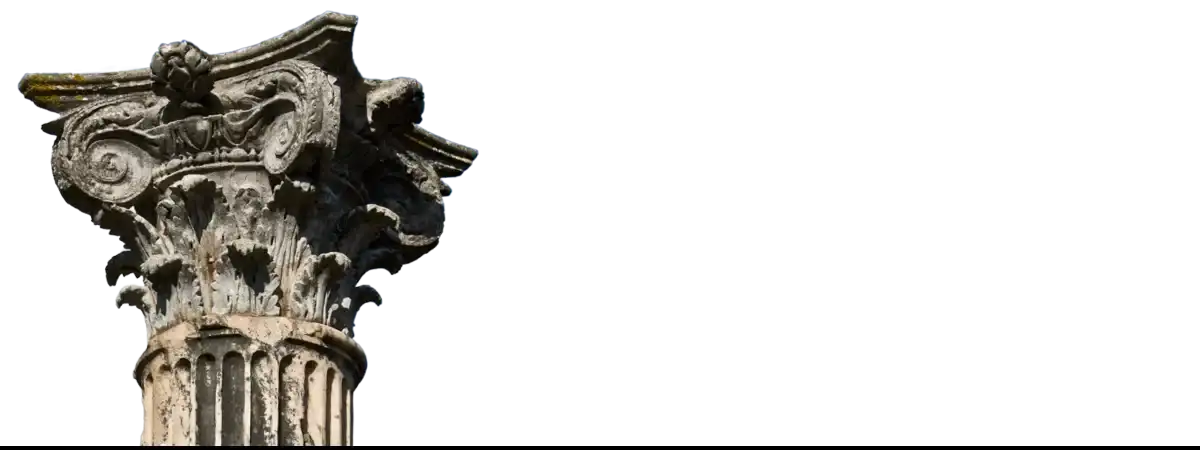
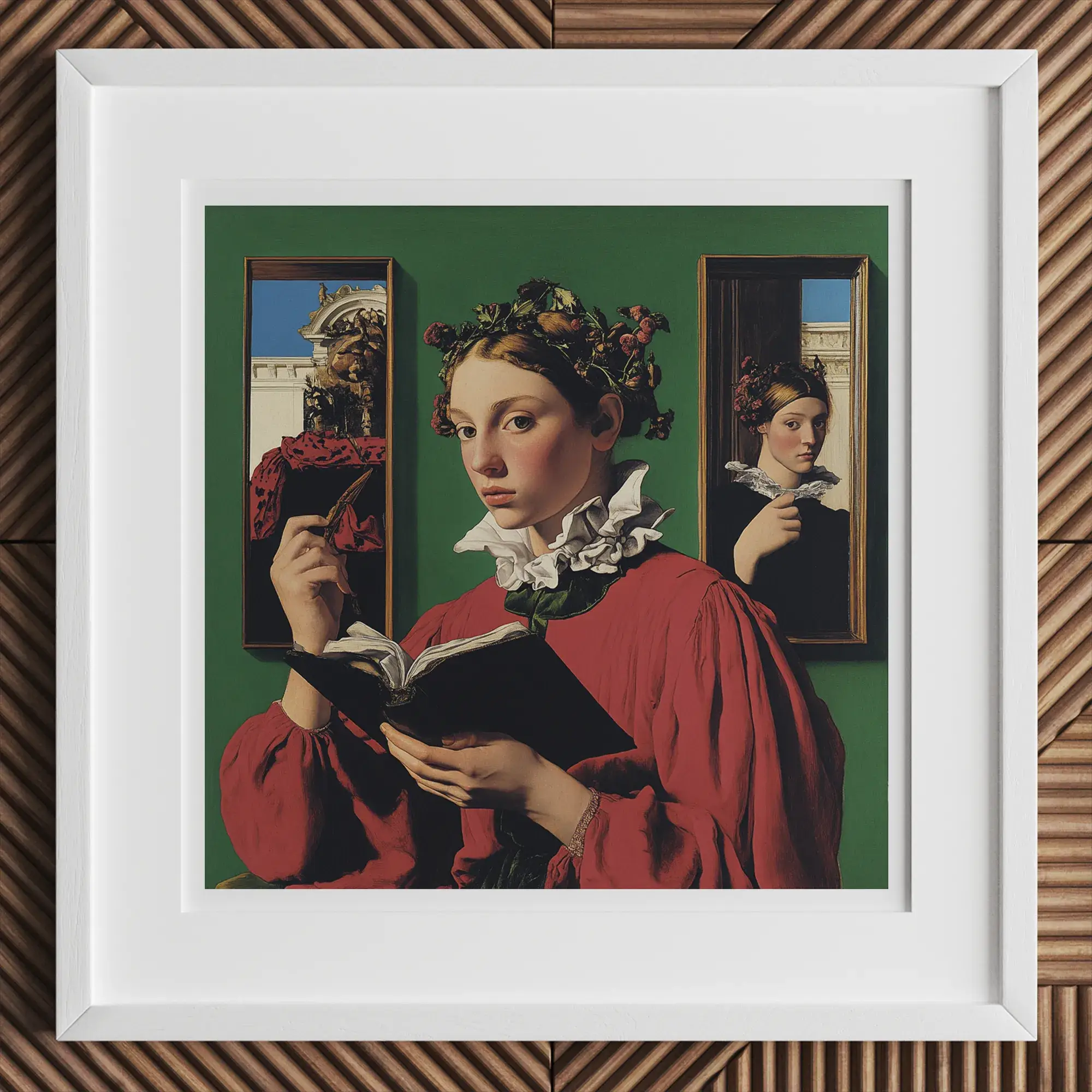
Neurodivergence as Art's Secret Muse
A torch sputters against limestone, and a hand—steady, deliberate—swirls ochre across the belly of a prehistoric bison. Millennia later a five-year-old autistic savant named Nadia sits at a kitchen table in Nottingham, pencil flying, summoning horses from thin air with the same anatomical precision as the muralists of Chauvet Cave. The two artists sharing nothing on the calendar yet everything in the gesture: fierce outline work, stacked perspectives, realism so lucid it feels hallucinatory.
Psychologist Nicholas Humphrey was the first to stitch that improbable thread, proposing in 1998 that the muralists of Chauvet Cave might have perceived the world through a “picture-first” cognition akin to non-verbal autism.
Art educator Julia Kellman followed quickly, matching Ice-Age lions to a seven-year-old boy's foreshortened ponies and arguing for a common “way of seeing” that leaps across 30,000 years of human sunrise.
Their claim ignited a quarrel still glowing at academic conferences: was early Upper Paleolithic art partly an outgrowth of neurodivergent perception, or are we guilty of retro-diagnosing ancestors who simply lacked written language?
Archaeologist Penny Spikins, sifting layers of antler and ash, leans toward the former. She notes how extreme realism, obsession with detail, and layered animal motion mirror autistic local-processing strengths. Skeptics counter with visions of shamans high on mushroom smoke, insisting psychotropic trance—not neurological variance—drove the ancient hand. Even Humphrey, two decades on, toyed with that psychedelic rebuttal.
Yet the argument’s heat signals a revelation: creativity’s taproot may draw from neurodevelopmental variance as reliably as from culture or technology.
The paradigm flips deficit into cognitive biodiversity: autism, ADHD, dyslexia, Tourette’s, and their kin become evolutionary strategies, not medical flaws. Where a monoculture farm invites blight, a polyculture meadow resists; likewise, a species of one brain type stalls, while a spectrum innovates.
Data bolsters the metaphor. A Swedish creative professionals study tracing more than a million citizens found artists, designers, and scientists significantly likelier to carry atypical neurodevelopment diagnoses than the general population. Other analyses map a similar arc: the farther a mind wanders from statistical norms, the more often it sparks ideas that redraw those norms. Ancient Greek physicians intuited as much, murmuring that “no great mind exists without a tincture of madness.”
None of this romanticizes struggle. A differently tuned nervous system can blister in classrooms built for linear thought or wither under stigma. The goal is recognition, not myth. Still, when we trace bison lines alongside Nadia’s horses, awe rises: atypical minds have steered art since art learned to breathe.
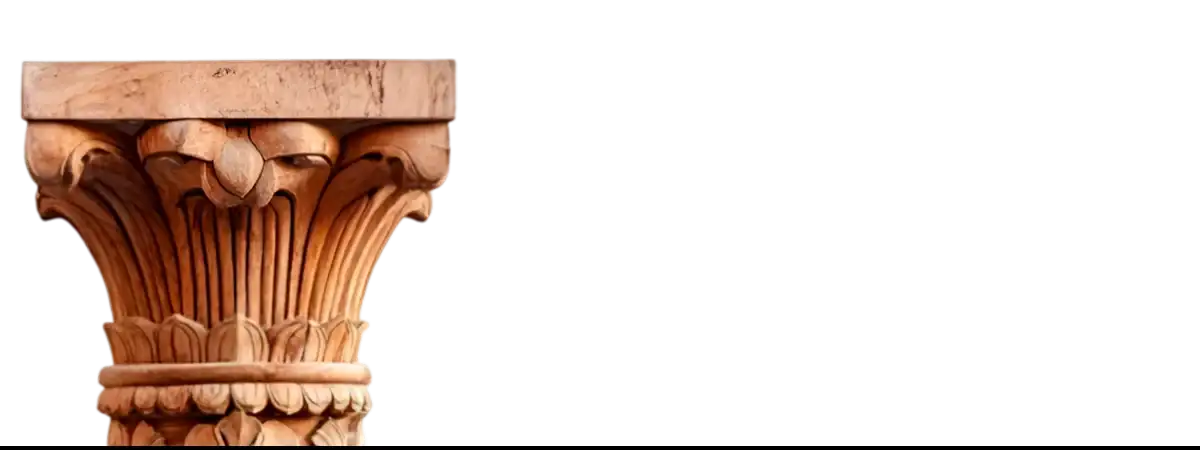

Reframing Genius
A half-finished mural, a cracked marble torso, a sky ablaze with whirlpool stars—art history is strewn with restless projects that hint at minds tuned to uncommon frequencies. Modern clinicians frame those frequencies as neurodivergence. Retro-diagnosis can slip into parlour game, yet when handled with rigour it reframes genius without shrinking it. What follows is a lens, not a verdict—a kaleidoscope that lets past masters shimmer in fresh neurological colour.

Leonardo da Vinci – Polymath Driven to Distraction
In 2019 neuroscientist Marco Catani scoured Leonardo’s notebooks and court accounts, concluding that attention-deficit/hyperactivity disorder best explains the painter’s ricocheting focus and legion of unfinished commissions. Evidence is circumstantial yet profuse: siege engines, musical instruments, flying machines, anatomical atlases—all drafted side-by-side while the Adoration of the Magi and other paintings lay abandoned. Catani flagged classic ADHD markers—time-blindness, hyperfocus bursts, executive dysfunction—echoed by Leonardo’s own marginalia: “Tell me if anything ever was done.”
Scholarly reviews also note Leonardo’s mirror-writing; developmental studies link reversed script to divergent hemispheric coordination found in some ADHD children. His anatomical cross-sections—brain ventricles rendered as interlocking gears—hint that he tried to diagram thought itself... while neglecting to invoice patrons. ADHD, reframed here as creative polymath neurodivergence, does not excuse delay but illuminates its cognitive roots.

Michelangelo Buonarroti – Stone, Solitude, and an Autistic Gaze
Where Leonardo scattered, Michelangelo burrowed. Psychiatrist Muhammad Arshad and professor Michael Fitzgerald argued in 2004 that the sculptor’s obsessive rituals and blunt social affect align with autistic traits. Letters reveal he despised banquet perfumes, wore wool doubled twice even in July, and slept in boots while painting the Sistine vault. Such sensory self-management echoes modern autistic routines.
He complained of “stench strong as plague,” layered textures for proprioceptive regulation, and fled Rome when papal demands overloaded his tolerance. Fitzgerald highlights echolalic scripts—“Risponderò dopo” recycled in every quarrel—while noting hyper-systemising brilliance: the Medici Chapel follows a proportional matrix Renaissance peers deciphered only after completion. Anatomical fidelity in his sculptures anticipates modern autistic savant artistry, suggesting that heightened pattern fixation can chisel marble into near-biological form.

Vincent van Gogh – Chromatic Thunder on the Spectrum
Over 150 diagnoses shadow Vincent van Gogh; psychiatrist Sandra Friedman added autism spectrum disorder in 2022. Traits trace from solitary childhood through Arles’ sensory storms. Letters to Theo brim with obsessive monologue on sunflowers and cypresses—controlled cadence familiar to clinicians coaching spectrum clients. His thick outlines and swirling halos mirror sensory hypersensitivity; spectrophotometric studies show his palette favoured pigments with extreme luminance, aligning with autistic colour affinity.
Clinical data reinforce the pairing: autistic adults face higher mood-disorder risk, matching Van Gogh’s tragic arc. Recognition reframes him—not as a romantic madman but as a neurodivergent genius whose cognitive variance shaped both torment and triumph.

Andy Warhol – Pop Art’s Pattern Machine
In 1960s Manhattan, Andy Warhol silkscreened Marilyn in factory rows, archived lunch receipts into 610 “time capsules,” and spoke in near-monotone. The UK’s National Autistic Society concluded his habits—prosopagnosia-like face blindness, ritual meals, fascination with repetition—put Warhol on the spectrum. His categorical hoarding reflects an autistic drive for predictability; museum researchers link such archival compulsion to enhanced visual-association connectivity, fertilising his tectonic grasp of mass-media iconography. Outsourcing repetitive silkscreen pulls to externalised executive-function strain—a collaborative accessibility strategy long before the term existed, and one used by artists through history.

Newton, Einstein, Dickinson – Constellations of Divergence
Isaac Newton’s sleepless alchemy, Albert Einstein’s delayed speech and image-first thinking, Emily Dickinson’s scripted seclusion—archival habits that fit modern autistic profiles. Confirmation remains elusive, yet recognising neurological pluralism counters the hagiographic myth of lone, inexplicable genius.
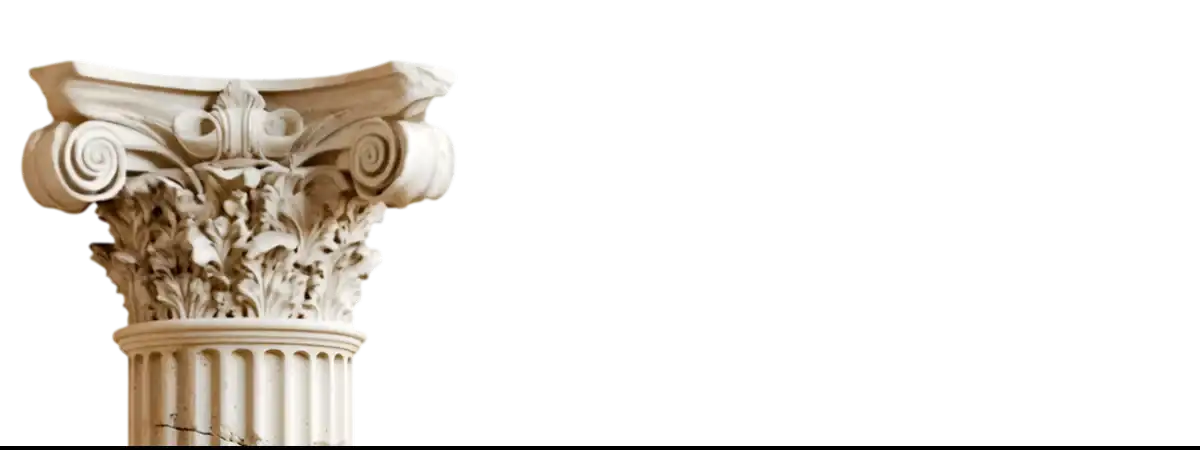
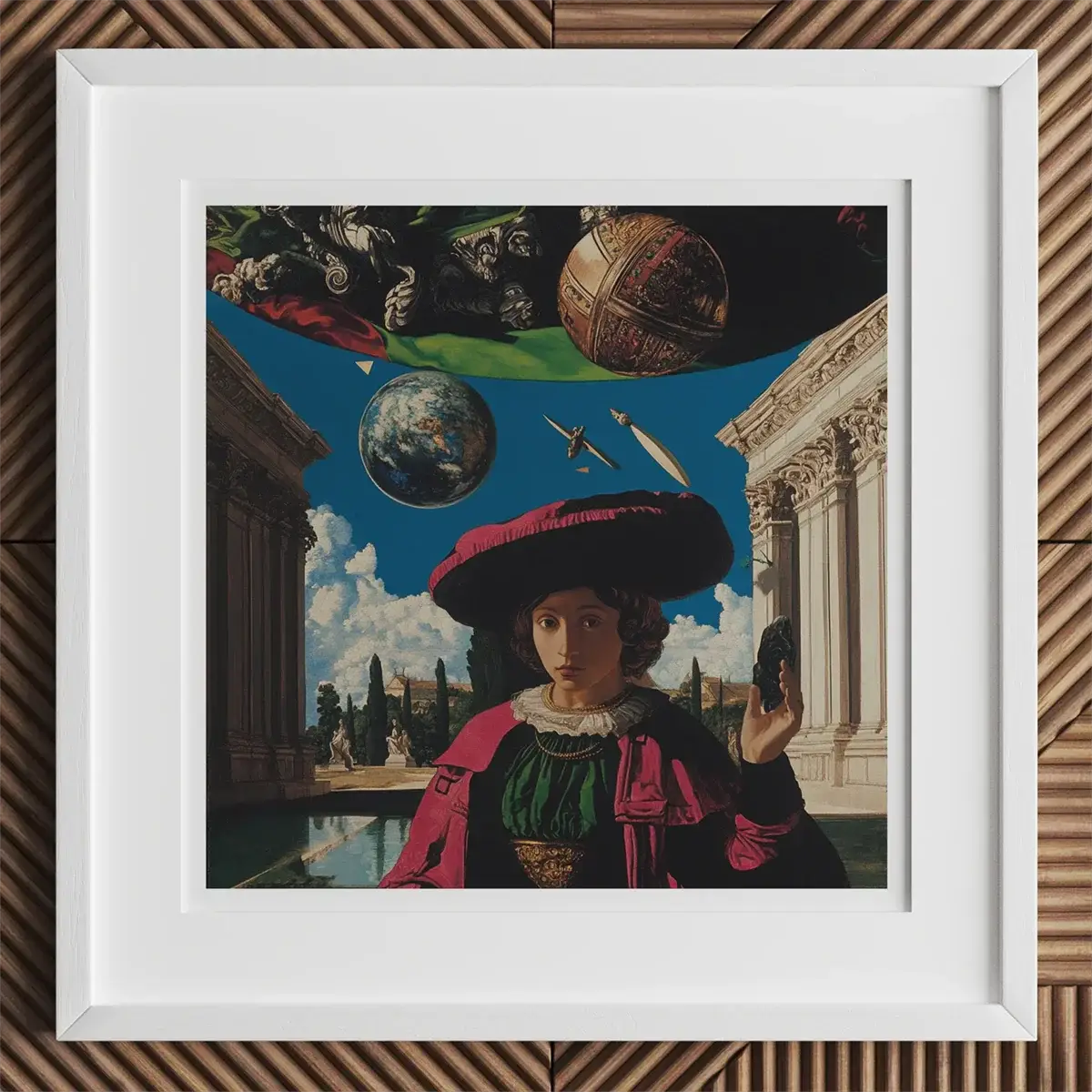
Specialized Focus Areas
Visual Arts
Where a neurotypical glance registers outline and hue, the neurodivergent gaze maps lattices of angle and undertone, treating canvas as calculus.
Dyslexic artists, whose minds often privilege spatial reasoning over phonetic coding, think architecturally: they draft negative space before positive form, arranging composition as if building scaffolding in mid-air.
Studies of art-school cohorts consistently report an over-representation of dyslexic students-evidence that what traditional classrooms mark down, studios grade as mastery. Functional-MRI research corroborates the pattern, showing augmented right-hemisphere activation during visuospatial challenges, a neural signature that aligns with sculptural fluency.
Autistic creators bring another palette: microscopic focus married to encyclopedic memory. Repetition and pattern, sometimes misread as rigidity, become their design language; color isn’t chosen, it is calibrated. British artist Stephen Wiltshire famously sketches cityscapes in forensic detail after a single aerial fly-over, his drawings equal parts cartography and reverie.
What observers call “photographic memory” is, for many autistic artists, habitual attention: the world arrives already pixelated, ready for precise recall. Works like Wiltshire’s resist the sentimental trope of talent despite disability. They exist because of neurodivergent perception-autism’s detail, dyslexia’s spatial cognition-traits pathologized in one arena, translated into aesthetic grammar in another.
The art market is slowly learning: outsider-art fairs now attract mainstream curators, and museums host sensory-friendly hours not as charity but as audience-expansion strategy. Beauty proves accessible in multiple bandwidths.

Music
Listen closely and neurodivergent timbre threads through centuries of composition. Autism often brings absolute or near-absolute pitch, enhanced auditory memory, and a drive to uncover pattern beneath melody.
Case studies document autistic savants who replicate concertos verbatim after a single hearing; beyond replication, autistic composers embed recursive structures, fractal repetitions, and micro-tonal balances that mirror their perceptual frameworks.
ADHD infuses music with propulsion. Neurochemical hunger for novelty turns improvisation into dopamine chase: jazz solos that pivot mid-phrase, drummers who accent the off-off beat, producers layering genre against genre until a new hybrid pulses.
Neural imaging finds that ADHD performers maintain simultaneous activation in reward circuits and motor-planning regions during improvisation, aligning with firsthand reports of feeling the ensemble as one kinetic organism. The trait sometimes dismissed as impulsivity becomes live-wire responsiveness onstage.
Tourette’s intersects music in surprising ways. Characterized by kinetic and vocal tics, a 2020 case-series of percussionists with Tourette’s documented significant tic reduction during performance, hinting that rhythm entrains motor circuits otherwise hyper-excitable. Creativity here is not escape from neurology but duet with it.

Literature and Writing
Written language, with its regimented spelling and syntax, seems hostile terrain for dyslexia-yet dyslexic authors often wield metaphor with panoramic sweep.
Cognitive research shows dyslexic participants outperforming controls on analogy-generation tasks, likely due to strengthened associative networks that compensate for phonological lag. Narratives unspool as cinematic sequences: worlds arrive in IMAX scale, then translate to prose dense with sensory embed.
Autistic writers contribute a different revolution: radical literalism that pushes description into hyper-specific terrain, sensory detail so exact it verges on synesthetic. Scholars have speculated that Emily Dickinson’s idiosyncratic dashes and slanted syntax mirror autistic communication patterns: compressed, intense, resistant to social varnish.
Contemporary autistic memoirists extend that lineage, crafting “sensory nonfiction,” in which prose itself flutters, squeaks, or blazes to enact perception rather than merely describe it.
ADHD storytelling sprints through nonlinear arcs, mirroring attentional leaps. Chapters fragment, timelines braid, narrators switch mid-page; the structure echoes cognitive velocity.
Publishing-industry analyses note a recent uptick in experimental novels by self-identified ADHD authors, whose episodic pacing now aligns with readers schooled on hyperlink culture. What once read as distraction reframes as kaleidoscopic viewpoint.

Scientific and Mathematical Innovation
In laboratories and chalk-filled lecture halls, neurodivergent cognition deconstructs orthodox problem frames. Autism’s systematic inclination excels at code integrity, algorithmic elegance, and theorem proof. Many historians interpret Alan Turing’s social privacy and deep fascination with abstraction as autistic traits dovetailing with code-breaking brilliance; his theoretical machine still undergirds modern computing architecture.
Dyslexia contributes global-processing flair. A University of Cambridge study posits that dyslexic cognition evolved to favour exploration strategies-scanning for patterns at macro scale, generating multiple hypotheses before converging. Field surveys of entrepreneurs echo this: dyslexic founders pivot ventures rapidly, spotting adjacencies invisible to strictly analytic rivals.
ADHD propels scientific frontiers through risk tolerance and rapid hypothesis generation. Neuropsychological profiles reveal elevated novelty-seeking and dopamine-modulated reward pursuit, traits correlated with higher patent counts in longitudinal cohorts. Such researchers leapfrog incremental studies, proposing unorthodox experiments that, when scaffolded by detail-oriented collaborators, birth entirely new sub-disciplines.
Tourette’s syndrome finds niche in kinetic engineering. Anecdotal reports describe Tourettic inventors designing tactile-feedback devices and rhythmic algorithms, leveraging motor hyper-vigilance into haptic-technology breakthroughs. Embodied cognition-feeling systems through constant involuntary motion-offers intuitive insight into ergonomics and robotics.
Across these domains, one theme recurs: neurodivergent traits deemed liabilities in standardized settings convert to leverage under conditions valuing depth, novelty, or audacity. Creativity is not a silver lining-it is the copper wire conducting neurological difference into societal circuitry.


Insights on Neuropsychology
Psychological Perspectives on Neurodivergence and Creativity
Modern psychology splits creative labor into two great currents: divergent thinking, the cataract that gushes novel possibilities, and convergent thinking, the channel that narrows options toward an elegant solution. Neurodivergent profiles rarely swim only one stream; they excavate new tributaries in the riverbed itself.
ADHD typifies the divergent swell. In classic “alternative uses” experiments—say, devising surprising functions for a paperclip—participants with ADHD generate more ideas, and those ideas rank higher in originality than neurotypical controls.
Researchers pin this ADHD fluency to reduced latent inhibition—the cognitive gatekeeper that filters peripheral stimuli. What others dampen as background chatter, ADHD minds admit, braid, and weave into surprise associations. The cognitive toll is distractibility; the dividend is rapid ideation.
Autism sketches a different contour: on the same tasks autistic cohorts often yield fewer answers, yet the responses score as rarer and more conceptually dense. Their creativity tilts toward depth rather than breadth, reflecting the monotropism theory—attention that tunnels deep into narrow interests, mining conceptual lodes untouched by broader scans. This attentional architecture also fuels convergent prowess: autistic cryptographers, jigsaw phenoms, and code debuggers locate singular solutions within labyrinths that leave more diffuse thinkers circling.
Dyslexia, long maligned in the spelling bee, routinely excels in analogy generation and narrative imagery. In one experimental storytelling study, dyslexic students produced a significantly higher proportion of novel metaphors than matched peers, likely a by-product of compensatory reliance on visuospatial cognition over phonological loops. Their minds concoct scenes in IMAX before trimming them into prose—an asset for filmmaking, architecture, and experiential design.
Personality factors undergird these patterns. ADHD scores high in novelty-seeking and openness; autism scores high in systemizing and sensory openness but lower in social novelty; dyslexia pairs elevated spatial reasoning with empathic imagination. The cocktail each profile brings determines how ideas germinate—lateral scatter, vertical drill, cinematic sweep.
Standardized creativity tests often punish such variance. Timed tasks under fluorescent glare reward speed and social calibration; they ignore the autistic artist who incubates one revolutionary idea overnight or the ADHD thinker whose epiphanies arrive out of sync with proctor clocks. Professional bodies now recommend domain-specific or time-flexible assessments to capture genuine divergent talent.
Such variance underscores why rigid creativity can misclassify neurodivergent talent. A standardized timed task may penalize the autistic designer who deliberates, or the ADHD musician who ideates past the buzzer and outside of time. Time-flexible protocols and multimodal portfolios map talent more faithfully.

Neuroscientific Findings: Divergent Thinking and Brain Function
Neuroimaging frames creativity as a dialogue between the default mode network (DMN)—daydream, memoir, mental simulation—and the executive control network (ECN)—focus, inhibition, goal monitoring. Creative insight ignites when these circuits oscillate in synchrony: DMN sparks the novel link; ECN tests it against reality.
ADHD brains exhibit attenuated DMN suppression during tasks. Functional MRI reveals concurrent DMN-ECN activation during idea generation, aligning with the high originality scores seen behaviorally. The downside emerges when the DMN’s hum drowns the ECN’s filter, scattering objectives. Medication that tunes catecholamine balance often improves persistence without anaesthetizing novelty.
Autism presents increased local connectivity—dense wiring within cortical neighborhoods—and reduced long-range connectivity. This favors microscopic precision yet can impede cross-domain leaps. Creativity studies show autistic participants excelling when tasks tap their expertise (e.g., musical structure, number patterns) but struggling on open-ended associative tasks divorced from system rules. Their innovation route moves through depth of detail rather than breadth of category.
Dopamine, the neurotransmitter of reward prediction, diverges across profiles: ADHD features elevated transporter density, driving novelty pursuit; autism shows heterogeneous dopamine regulation, with some subtypes exhibiting attenuated signaling linked to repetitive focus. Dyslexia’s biochemical signature is less defined but likely involves right-hemisphere dominance in language tasks, nudging problem-solving toward spatial-semantic associations.
Electroencephalography adds temporal nuance: ADHD subjects show heightened theta-band power (mind-wandering) but spike into beta-gamma coherence during hyperfocus, mirroring the flow state of elite athletes. Autistic participants manifest sharper gamma bursts during sensory discrimination, corresponding to their detail acuity. Such rhythms illustrate that neural divergence is not chronic dysfunction but dynamic re-weighting of cognitive frequencies.
Neuroscientists caution against reductionism: brains exist on gradients, not in diagnostic silos. Still, these trends illuminate how structural variance shapes the pathways an idea travels from glimpse to breakthrough.

Sensory and Memory Dimensions
Creativity requires raw material. Neurodivergent sensory profiles enlarge or refine that feedstock. Autistic hypersensitivity can turn a city block into an aural orchestra: HVAC drones, neon buzz, shoe-sole rhythms. Where others filter, autistic perception archives, yielding databases of texture and timbre ready for artistic repurposing. PET studies link this to heightened activation in primary sensory cortices and atypical thalamic gating.
Hyperfocus, shared across ADHD and autism, functions as involuntary laboratory time: norepinephrine and dopamine surge, the locus coeruleus locks attention, and cortical noise diminishes. Hours vanish; violin études, code strings, or bead mosaics accumulate. The state is unpredictable but can be coaxed by novelty (ADHD) or structured interest (autism). Workflows that allow deep dives—long blocks, asynchronous deadlines—capture its output.
Memory patterns further diversify talent reservoirs: ADHD working memory fluctuates like radio static, yet emotionally salient events embed deeply, resurfacing in songwriting or stand-up comedy. Autism pairs episodic memory with semantic grids: a botanist on the spectrum recalls both the scent of a childhood forest and the Latin taxonomy of each fern. Dyslexic long-term memory favors narrative and spatial schematics; oral historians and product designers alike leverage this cinematic recall.
Cross-modal phenomena—synesthesia—occur at elevated rates, approximately 7 percent in autism and 10 percent in dyslexia. An autistic-synesthetic painter might taste brass timbre as salinity, guiding color choice; a dyslexic poet might feel letters as textures, forging tactile metaphors. These crossings extend the palette of creative recombination, blending sensory codes that standard perception keeps segregated.
Together, all these findings reaffirm a central lesson: innovation does not stem from generic optimization but from diversified circuitry. Humanity’s problem-solving bandwidth widens when society tunes environments to distinct neural frequencies—dampening fluorescent hum, allowing movement in meetings, or teaching via 3-D models. Under such conditions, the ADHD brainstormer, autistic pattern-smith, and dyslexic spatial narrator each reach cognitive resonance, generating discoveries the uniform mindstream could never conceive.
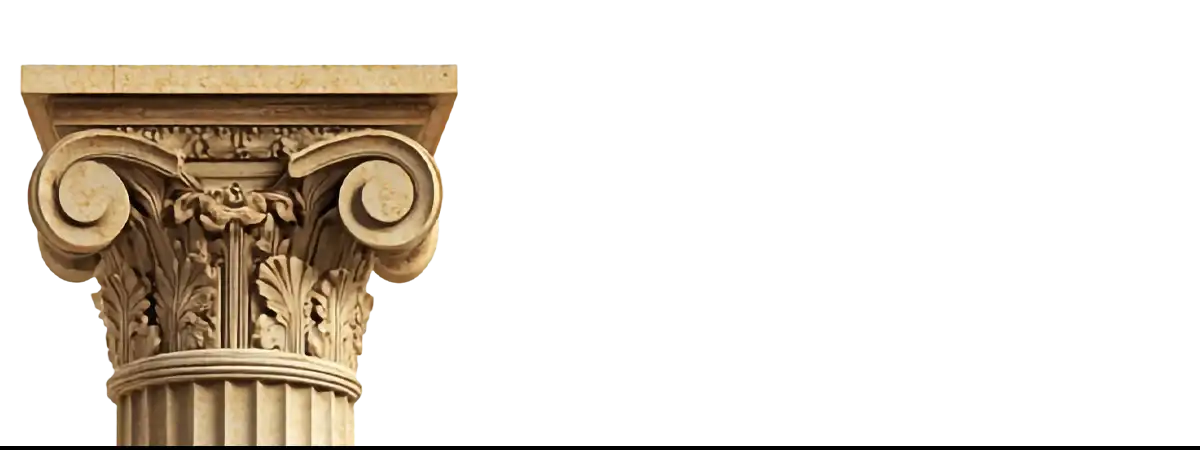

Cognitive and Neurological Mechanisms
Creativity rarely travels straight highways; neurodivergent cognition prefers switchbacks, cul-de-sacs, and hidden underpasses that converge on insight.
Functional-MRI work on ADHD shows rapid toggling between the brain’s default-mode network (DMN), the wellspring of spontaneous association, and the task-positive network (TPN), which steers goal-directed focus.
This micro-cycling, measured in milliseconds, fuels “leap-frog” ideation: a comedian with ADHD pounces on punchlines no linear writer spots; a product designer marries skateboard dynamics to aerospace polymers overnight. Attention ricochets, but invention lands.
Autistic cognition, by contrast, burrows. Eye-tracking experiments reveal idiosyncratic scan paths—laser sweeps across texture bands others skip. Conversations with autistics mirror this: a single concept triggers monotropic descent through etymology, physics, and myth—threads seemingly disjointed ’til their underlying pattern surfaces. Deep tunnels mining ore invisible to broader pans. Like cryptographers and data-visualists who detect anomalies that automated systems miss.
Dyslexic minds bring yet another geometry. Neuro-linguistic imaging shows reduced activation in phonological loops but heightened right-hemisphere engagement tied to visuospatial synthesis. Thought arrives as panoramic tableau; analogies spark between distant mental models.
When a dyslexic novelist compares grief to “gravity from a missing moon,” the metaphor feels fresh because spatial and emotional data share neural neighborhoods other brains segregate.

Hyperfocus, Perception, and Sensory Tuning
Public caricature casts ADHD as restless, autism as distracted—but both house a turbo-mode: hyperfocus. During these episodes, dopamine and norepinephrine surge, the locus coeruleus locks target, and cortical chatter dims. PET scans liken the pattern to elite athletes in flow. For ADHD creators, hyperfocus ignites when novelty and personal relevance align; a software engineer may code twelve hours straight. Autistic hyperfocus engages via structured fascination: prime numbers, vintage train schedules, or textile weaves receive monastic devotion.
The state resists voluntary switch-on, yet environments can beckon it: uninterrupted blocks, personalised lighting, and minimal multitasking lure ADHD hyperfocus; predictable routines and explicit rule sets invite autistic immersion. One industry field test by Atlassian reported a 48-percent reduction in bug-fix time after instituting “focus sprints.”
What clinicians label sensory over-responsivity can also be archival horsepower. Autistic participants often store more raw data per moment — showing hyper-activation in primary sensory cortices and atypical thalamic filtering. A photographer notes “fifty greens where others see one,” translating minute hue differences into award-winning vistas. Musicians with perfect pitch, over-represented among autistic cohorts, pick harmonic overtones that typical ears miss.
ADHD tilts toward sensory seeking. Elevated dopamine D4-receptor expression chases stimulation; percussionists with ADHD relish sub-woofer pulses, fashion designers crave tactile velvet experiments. The brain’s novelty circuitry rewards chaotic environments, turning sensory crave into aesthetic daring.
Synesthesia, occurring in roughly four percent of the general population, rises to seven-to-ten percent among autistic and dyslexic groups. A composer who tastes brass as brine arranges orchestration by palate; a graphic artist who hears colour calibrates hue to melody. Such cross-coding widens creative matrices: senses fuse, metaphors literalise.

Pattern Recognition and Cognitive Flexibility
Pattern recognition is innovation’s backbone. Autistic cognition excels via enhanced perceptual functioning: dense local connectivity sharpens detail processing, while reduced social-signal distraction frees analytic bandwidth. A 2020 technical report from the NATO Cooperative Cyber Defence Centre of Excellence found autistic analysts detecting malware signatures 14.7 percent faster than neurotypical peers.
Dyslexic reasoning thrives on analogical breadth. Transcranial-magnetic-stimulation work by Muggleton and colleagues shows the dorsolateral prefrontal cortex maintaining a wider associative net, enabling solution—range thinking: multiple hypothetical scaffolds erected before narrowing. This proves advantageous in design thinking and venture ideation where first answers seldom survive market contact.
ADHD supplies cognitive flexibility—quick task-switching powered by striatal dopamine flux. While inhibition suffers, the upside is rapid context pivot: entrepreneurs with ADHD iterate prototypes swiftly, discarding sunk costs without ruminative drag. A 2020 meta-analysis confirmed elevated divergent-ideation scores in open-ended engineering challenges.
Tourette’s syndrome, though less studied, demonstrates motor pattern-learning advantages. Repetitive tics sensitise basal-ganglia circuits, enhancing rhythmic timing. A case-series in Movement Disorders showed Tourettic drummers retaining complex metres with uncommon fidelity.
Flexibility metrics vary: autism shows high adaptability within explicit systems (chess openings, programming languages) but low tolerance for unsignalled rule change; ADHD flips the profile. Corporate teams that pair these traits-autistic system anchors with ADHD pivot drivers-report fewer project stalls and richer creative brainstorms.

Synthesis: A Polyphonic Brain Orchestra
Neurodivergent mechanisms are not competing soloists but instrumental sections of a symphony:
-
ADHD supplies percussion-impulsive rhythms and tempo shifts.
-
Autism handles strings-precise pattern, tonal fidelity.
-
Dyslexia commands brass-broad thematic swells.
-
Tourette’s adds woodwinds-unexpected trills that enliven motif.
Creativity flourishes when orchestration values every timbre. Designing for that orchestra means calibrating workplaces and classrooms like concert halls: variable acoustics, light dimmers, schedule syncopation. When such adjustments become infrastructure, hyperfocus erupts, sensory archives unlock, and non-linear cognition composes works the uniform mindstream could never score.

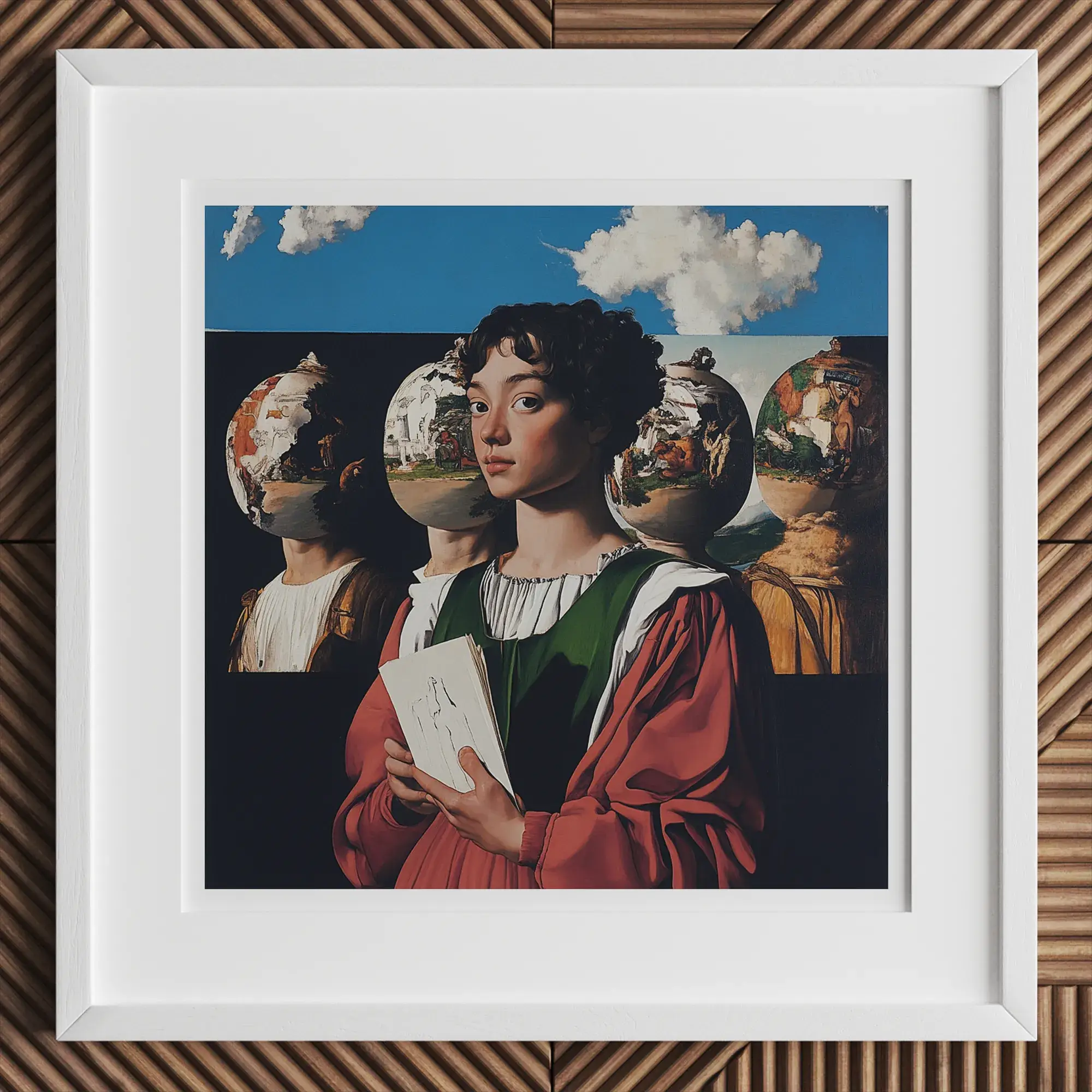
Neurodivergence and Creativity Are Inseparable
A Neurobiological Pact
Creativity demands two neurological feats: generate variance and then sculpt coherence. Neurodivergent brains are wired for this dialectic. ADHD’s reduced latent inhibition floods the mind with raw material, while autism’s heightened local connectivity chisels it into intricate form. Dyslexic right-hemisphere dominance supplies panoramic context, and Tourette’s basal-ganglia hypersynchrony refines rhythmic precision. No single neurotype completes the circuit alone, yet divergent configurations bring both spark and chisel in proportions neurotypical brains often lack.

Evolutionary Logic
From an evolutionary lens, cognitive heterogeneity is insurance. During Paleolithic droughts, a hyper-focused pattern-noticer might spot subtle shifts in migration; a novelty—seeking improviser invents a new snare. Genetic studies find risk alleles linked to ADHD and dyslexia circulating at stable frequencies—evidence of adaptive payoff.
History echoes the pattern. Florentine patrons bankrolled Leonardo da Vinci’s kinetic obsessions, Bletchley Park leveraged Alan Turing’s logical monomania, and 1950s Manhattan drummers such as Buddy Rich—whose biographers describe tic-like flourishes—drove bebop’s heartbeat.
Whenever societies treat idiosyncrasy as asset rather than aberration, cultural accelerants ignite. Rigid eras—Victorian factories, early 20th-century eugenics-show the inverse: innovation wilts when divergence is pathologized.

Cultural Proof‑of‑Concept
History’s innovation spikes coincide with pockets of tolerance for atypical minds:
- The Florentine Renaissance offered patronage that sheltered da Vinci’s kinetic obsessions.
- The code rooms of Bletchley Park leveraged Turing’s social solitude and logical monomania.
- The New York jazz scene of the 1950s turned Tourettic drumming patterns into bebop’s heartbeat.
Whenever societies create niches where idiosyncrasy is asset rather than aberration, cultural accelerants appear.
Conversely, eras of rigid conformity—Victorian factories, early 20th‑century eugenics—stifle output precisely by pathologizing the same minds.

Economic Imperative
Modern knowledge economies run on novelty.
A 2023 McKinsey Global Innovation Survey of 600 CEOs ranked “innovation velocity” the top survival metric. At the same time, Gallup reports 85 percent of neurodivergent employees mask or underperform in non-inclusive workflows.
When firms retrofit environments—sensory-lite spaces, asynchronous collaboration, strength-based roles—Boston Consulting Group finds revenue from new product lines can climb 19 percent within three years. Ignore divergence, and you pay in lost patents and churn.

Toward a Creativity Commons
If divergence is the engine, societies must become better mechanics:
-
Sensory-tiered studios in art schools and R&D labs cut burnout and lift output.
-
Portfolio-over-pitch hiring reveals brilliance obscured by interview anxiety.
-
Neuro-inclusive IP policies grant equitable royalties to inventors who present via AAC or dictation.
-
Creativity Diagnostics 2.0—tasks such as the untimed, multi-modal Creative Construction Test-outperform Torrance benchmarks in predicting breakthrough patents.

Conclusion: The Inseparability Clause
Strip Janus of one face and time collapses; strip humanity of neurodivergence and creativity withers. Variation is not ornamental—it is load-bearing.
The painter’s synesthetic palette, the mathematician’s obsessive recursion, the choreographer’s kinetic staccato all spring from neural architectures once dismissed as defective. To honor creativity is therefore to honor neurodivergence; suppress one and you starve the other.
Civilization’s next leap—carbon-negative concrete, quantum-safe cryptography, multisensory literature—will almost certainly germinate in minds that flout prevailing norms.
Our charge is neither to normalize nor romanticize those minds, but to build a world tuned to their frequency. Only then does the title of this essay crystallize not as argument but as axiom: Neurodivergence and creativity are, and have always been, inseparable.

Reading List
Banissy, Michael J., et al. “Synesthesia: From Science to Art.” Nature Reviews Neuroscience 20, no. 9 (2019): 651-62.
Bednarik, Robert G. Myths about Rock Art. Oxford: Archaeopress, 2016.
Bednarik, Robert G. “Brain Disorder and Rock Art.” Cambridge Archaeological Journal 23, no. 1 (2013): 69-81.
Bogousslavsky, Julien. “The Last Myth of Giorgio de Chirico: Neurological Art.” Frontiers in Neurology and Neuroscience 27 (2010): 29-45.
Carson, Shelley H. “Cognitive Disinhibition, Creativity, and Psychopathology.” Perspectives on Psychological Science 6, no. 5 (2011): 499-506.
Catani, Marco, and Paolo Mazzarello. “Leonardo da Vinci: A Genius Driven to Distraction.” Brain 142, no. 6 (2019): 1842-56.
Derby, John. “Nothing About Us Without Us: Art Education’s Disservice to Disabled People.” Studies in Art Education 54, no. 4 (2013): 376-80.
Friedman, Sandra L., Lori Krier, and Ivan K. Arenberg. “Autism Added to Behavioral Profile of Vincent van Gogh.” International Journal of Forensic Sciences 7, no. 1 (2022): 1-5.
Hall, Jennifer. “The Neurophenomenological Particulars of Interactive Art Installation as They May Be Interpreted Through Merleau-Ponty.” Master’s thesis, Institute for Doctoral Studies in the Visual Arts, 2009. http://jenhall.org/merleau.html.
Heaton, Peter. “Autism, Music, and Absolute Pitch: An Overview.” Philosophical Transactions of the Royal Society B 364, no. 1522 (2009): 1445-52.
Houtepen, Jaris, et al. “Genetic Overlap Between ADHD and ASD.” BMC Psychiatry 21 (2021): 284.
Humphrey, Nicholas. “Cave Art, Autism, and the Evolution of the Human Mind.” Cambridge Archaeological Journal 8, no. 2 (1998): 165-91.
James, Ioan. “Autism and Art.” In Neurological Disorders in Famous Artists: Part 3, edited by Julien Bogousslavsky et al., 168-73. Basel: Karger, 2010.
Kellman, Julia. “Making Sense of Seeing: Autism and David Marr.” Visual Arts Research 22, no. 2 (1996): 76-89.
LeFrançois, Brenda A., Robert Menzies, and Geoffrey Reaume, eds. Mad Matters: A Critical Reader in Canadian Mad Studies. Toronto: Canadian Scholars, 2013.
Mulvenna, Catherine M. “Synaesthesia, the Arts and Creativity: A Neurological Connection.” In Neurological Disorders in Famous Artists: Part 2, edited by Julien Bogousslavsky and Michael G. Hennerici, 206-22. Basel: Karger, 2007.
Podoll, Klaus, and Derek Robinson. Migraine Art. Berkeley: North Atlantic Books, 2009.
Podoll, Klaus, and Derek Robinson. “Migraine Experiences as Artistic Inspiration in a Contemporary Artist.” Journal of the Royal Society of Medicine 93 (2000): 263-65.
Podoll, Klaus, and Duncan Ayles. “Inspired by Migraine: Sarah Raphael’s ‘Strip!’ Paintings.” Journal of the Royal Society of Medicine 95 (2002): 417-19.
Sacks, Oliver. An Anthropologist on Mars. New York: Knopf, 1995.
Schachter, Steven C. “The Visual Art of Contemporary Artists with Epilepsy.” International Review of Neurobiology 74 (2006): 119-31.
Schneck, Jerome M. “Henry Fuseli, Nightmare, and Sleep Paralysis.” JAMA 207 (1969): 725-26.
Selivanova, A. S., et al. “Leonardo da Vinci’s Creativity and Attention Deficit Hyperactivity Disorder.” Ural Medical Journal 3 (184) (2020): 128-30.
Singer, Judy. “Why Can’t You Be Normal for Once in Your Life?” In Disability Discourse, edited by M. Corker and S. French, 59-67. Buckingham: Open University Press, 1999.
Spikins, Penny, et al. “How Do We Explain ‘Autistic Traits’ in European Upper Palaeolithic Art?” Open Archaeology 4, no. 1 (2018): 263-79.
Thorpe, Vanessa. “Was Autism the Secret of Warhol’s Art?” The Observer, March 14, 1999.
Wiltshire, Stephen. Floating Cities. London: Michael Joseph, 1991.
Wiltshire, Stephen, and Hugh Casson. Drawings. London: Dent, 1987.















